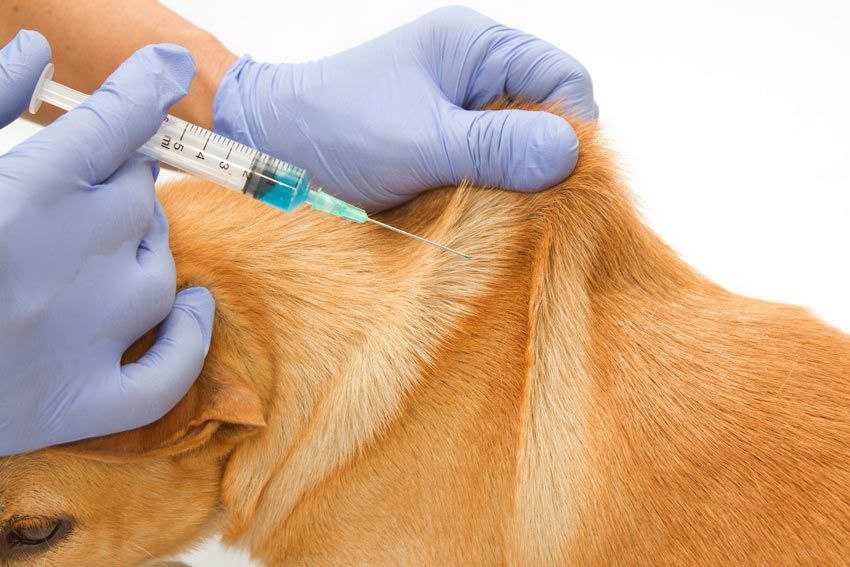Fludrocortisone Acetate is a crucial medication for managing adrenal insufficiency in dogs, particularly in conditions like Addison’s disease. This synthetic corticosteroid plays a vital role in maintaining hormonal balance and overall health. Understanding its importance, how it works, and its impact on canine health can help you make informed decisions about your dog's treatment. Here's a comprehensive look at why Fludrocortisone Acetate is so important in veterinary medicine.
What is Fludrocortisone Acetate?

Fludrocortisone Acetate is a synthetic drug designed to mimic the action of aldosterone, a hormone produced by the adrenal glands. Aldosterone regulates sodium and potassium levels in the body, which is essential for maintaining fluid balance and blood pressure. In dogs with adrenal insufficiency, the adrenal glands do not produce enough aldosterone, leading to significant health issues. Fludrocortisone Acetate helps replace this missing hormone and manage these imbalances.
The Role of Fludrocortisone Acetate in Canine Health
Regulation of Sodium and Fluid Balance: Aldosterone’s primary role is to promote sodium retention by the kidneys, which helps maintain fluid balance and blood pressure. Fludrocortisone Acetate mimics this function, helping to prevent dehydration and maintain a stable blood pressure. This is particularly important in dogs with Addison’s disease, who are prone to fluid imbalances and low blood pressure.
Potassium Regulation: Another critical function of aldosterone is to regulate potassium levels by promoting its excretion through the kidneys. Elevated potassium levels can cause severe health problems, such as heart arrhythmias and muscle weakness. By facilitating potassium excretion, Fludrocortisone Acetate helps keep potassium levels within a safe range, reducing the risk of these complications.
Partial Cortisol Replacement: While Fludrocortisone Acetate primarily acts as a mineralocorticoid, it also has some glucocorticoid effects. Cortisol, another hormone produced by the adrenal glands, is essential for stress response and various metabolic processes. Although Fludrocortisone Acetate does not fully replace cortisol, it can provide partial support. In cases where additional cortisol is needed, other medications, such as prednisone, may be used alongside Fludrocortisone Acetate.
When is Fludrocortisone Acetate Used?
Fludrocortisone Acetate is typically prescribed for:
Addison’s Disease: This condition, also known as primary adrenal insufficiency, occurs when the adrenal glands fail to produce adequate levels of aldosterone and cortisol. Fludrocortisone Acetate helps to replace the missing aldosterone, managing electrolyte imbalances and supporting fluid balance.
Adrenal Insufficiency: In cases where the adrenal glands are not functioning optimally but Addison’s disease is not the primary diagnosis, Fludrocortisone Acetate can still be beneficial in addressing hormone deficiencies.
How is Fludrocortisone Acetate Administered?
Fludrocortisone Acetate is administered orally, usually in tablet form. The dosage is customized based on your dog’s weight, the severity of their condition, and their response to the medication. Typical dosages range from 0.01 to 0.1 milligrams per pound of body weight, given once daily.
To ensure effective administration:
- Follow Veterinary Instructions: Administer the medication exactly as prescribed by your veterinarian. Do not alter the dosage or frequency without consulting them.
- Consistency: Give the medication at the same time each day to maintain stable hormone levels in your dog’s system.
- Accurate Measurement: Use a precise method for measuring the dosage to avoid errors.
Monitoring and Follow-Up
Regular monitoring is essential to ensure that Fludrocortisone Acetate is effectively managing your dog’s condition and to adjust the dosage as needed. Your veterinarian will schedule follow-up appointments to:
- Evaluate Effectiveness: Assess how well the medication is addressing your dog’s symptoms and make any necessary dosage adjustments.
- Monitor Electrolytes: Perform blood tests to check sodium and potassium levels, ensuring they remain within a healthy range.
- Adjust Treatment: Modify the treatment plan based on your dog’s progress and any side effects observed.
Potential Side Effects
While Fludrocortisone Acetate is generally well-tolerated, some side effects may occur, including:
- Increased Thirst and Urination: Due to its effects on sodium and potassium balance, your dog may experience increased thirst and more frequent urination.
- Weight Gain: Some dogs may gain weight due to fluid retention or increased appetite.
- Lethargy: Although less common, some dogs might show signs of lethargy or reduced energy levels.
If you notice any severe or unusual side effects, contact your veterinarian promptly for guidance.
Conclusion
Fludrocortisone Acetate is a critical medication for managing hormonal imbalances in dogs, particularly those with Addison’s disease or other forms of adrenal insufficiency. By mimicking aldosterone, it helps regulate sodium and potassium levels, maintain fluid balance, and support overall health. Proper administration, regular monitoring, and awareness of potential side effects are key to effectively managing your dog’s condition.
If your dog is diagnosed with a hormonal imbalance, consult your veterinarian about incorporating Fludrocortisone Acetate into their treatment plan. With the right care and management, this medication can significantly enhance your dog’s quality of life and overall health. Read more







